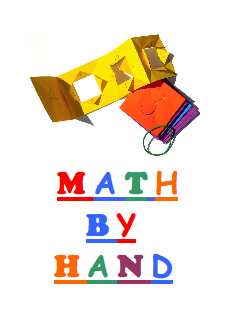Homeschool . . . one of its many perks is more free time to play. Playing outside was once an unquestioned staple of childhood. TV and computer time have sadly encroached on this very healthy impulse. As a child I was often encouraged to “Go outside and play.” I wore a skate key on a string around my neck at all times, ever-ready to clamp on my shoe skates and go flying down the street, an asphalt playground, since our block dead ended in a lush, overgrown railroad trestle.
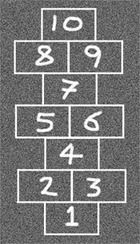

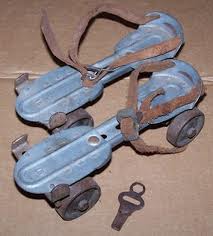
Other favorite activities were endless games with a pink rubber ball, jump rope, hopscotch, and of course collecting fireflies, kept in a jar with a vented lid and a few blades of grass, and released back into the “wild” the next day. In contrast today, indoor play most often involves a screen, with mouse-clicking the only physical exercise. The resulting decline in the overall physical health of our children is startlingly steep.
It’s been well documented that many Americans, including children, are overweight. And the statistics for the accompanying rise in Type 2 diabetes in children is staggering. The good news is that this and many other health problems currently plaguing children are preventable (and reversible) through changes in diet and exercise.
Play is indeed a key ingredient for effective, creative learning. Our best and most renowned scientists said that play was the foundation of their most amazing discoveries. Albert Einstein said, “Play is the highest form of research.” And, “It is nothing short of a miracle that the modern methods of education have not yet entirely strangled the holy curiosity of inquiry . . . It is a very grave mistake to think that the enjoyment of seeing and searching can be promoted by means of coercion and a sense of duty.” And, “To stimulate creativity, one must develop the childlike inclination for play . . . ”
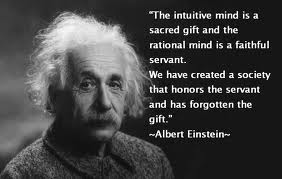
So aside from the fact that vigorous outdoor play is the remedy for so many ills, it hones the senses and the critical imaginative forces that are indispensable to a successful education. Play should accompany learning itself as well. Playful, child-friendly curriculums like Math By Hand can be effective deterrents to the sort of fears that stand in the way of true academic success.
Nature is another sadly untapped resource for today’s children. Her great book of secrets teaches as no other book (or TV or computer) can. Peter Macinnis quotes some favorite passages from Rudyard Kipling as an exhortation to explore nature close-at-hand, in your own backyard!
Curiosity is the best teacher. As Kipling says, “I keep six honest serving-men / They taught me all I know; / Their names are What and Why and When / And How and Where and Who.” Macinnis follows with a detailed account of how your children can explore in their own backyard. Read all about it here:
http://yourkidsed.com.au/info/nurturing-a-sense-of-wonder
And go outside and play, it’s all out there!

Tags:

Should we be using different measuring tools for intelligence? In 1983 Dr. Howard Gardner, a professor of education at Harvard University, developed the theory of multiple intelligences. This theory allows for a multi-faceted look at the qualities and talents that comprise true intelligence.
Homeschoolers especially enjoy the flexibility of incorporating this theory into all lessons in all subjects. Math, often the most challenging subject to teach and learn, is made more interesting and effective when looked at through the lens of multiple intelligences. According to Dr. Gardner’s theory, there are eight intelligences or learning styles. Here they are, with suggestions for how each one might fit your child(ren)’s learning needs and how to integrate them with your math lessons. Note that most children will often exhibit more than one!
Linguistic-Auditory (“word-smart”)
Loves to read, write, recite, and talk! S/he feels most comforatble curled up with a book or listening to/telling a story. Incorporate stories like “The Seven Swans” or “The Twelve Months” into first grade number recognition lessons. Clapping game rhymes like “Miss Mary Mack” could be a lead-in to times tables practice in second or third grade math lessons. And word problems at all levels!

Logical-Mathematical (“number-reasoning smart”)
Loves math and science! S/he is also good at problem-solving, recognizing patterns, and likes to conduct scientific experiments. Focus on the relationship between patterns and numbers, i.e. geometric forms and numbers, like the triangle and the number 3, the square and the number 4, etc. Use number “tricks” to encourage and enliven math practice, and point out patterns in the times tables, factors, etc. Relate math concepts to some of those science experiments!

Bodily-Kinesthetic (“body-smart”)
Loves to be physically active and has excellent eye-hand coordination and dexterity. S/he prefers hands-on activities, tends to remember by doing rather than hearing or seeing, and is very good at dance and/or sports. Liven up your math lessons with lots of physical movement like stepping and counting, first the numbers, then the times tables. Adapt vigorous games like hopscotch or tag for effective math skills practice, and include hands-on activities like making “real” numbers with clay and other materials and always use manipulatives to help make abstract math concepts more concrete and understandable.

Musical (“music-smart”)
Enjoys singing and playing musical instruments, recognizes musical patterns and tones, and remembers songs and melodies well enough to sing or play “by ear.” S/he’s good at thinking in patterns, rhythms, and sounds. Relate music theory to math concepts (i.e. how the scales and notes relate to fractions). Have your musical student compose songs that are helpful learning aids for challenging math concepts such as learning the steps in long division.

Visual-Spatial (“picture-smart”)
Loves to draw, paint, put puzzles together, and interpret graphs, charts, and maps. S/he’s good at visualizing things and following or giving directions. Include art as an integral part of your math curriculum with colorful and imaginative illustrations of concepts and lessons. Use visual patterns like magic squares to teach various number patterns. Teach with manipulatives, i.e. color-coded columns for place value, coin rubbings to teach decimals and fractions using money amounts, and incremental, color-coded fraction pieces.
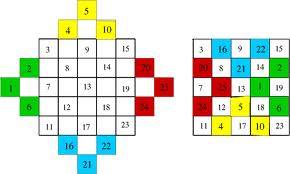
Interpersonal (“people-smart”)
Interacts well with others, and is skilled at assessing their emotions, motivations, and intentions. S/he’s good at verbal and non-verbal communication, seeing things from different perspectives, resolving conflicts, and creating positive relationships. Your math curriculum should include lots of group activities like math-adapted games, cooperative problem solving, and group projects that use math skills like building, cooking, gardening, and crafts.

Intrapersonal (“self-smart”)
Self-reflective and aware, good at assessing strengths and weaknesses, understands the basis for motivations and feelings, S/he’s a creative day-dreamer who also enjoys analyzing theories and ideas. Include lots of “back story” in your math curriculum: history and biography, like the origins of the modern measurement system (the king’s foot, the original word for mile, mille: a thousand paces), the history of number systems, and mathematician’s life stories.

Naturalistic (“nature-smart”)
Loves exploring the great outdoors, and has a lively interest in all things in nature, like botany, biology, and zoology. S/he’s good at cataloging or categorizing information, and likes camping, gardening, and hiking. Imbue your math curriculum with multiple examples of how math appears in the natural world, such as the spiral in the sunflower and snail shell, the hexagon in the snowflake and honeycomb, and even the octagon in street stop signs!

Integrating all these aspects into your homeschool math curriculum will not only insure that your child(ren) will be more engaged and interested in their math lessons, but that their interest will result in better retention, higher test scores, and a lifelong love of learning. Math, more so than any other subject, needs to be taught and learned with high-interest, versatile, and creative materials and methods! A genius lies sleeping in every child, with a face that’s multi-faceted and diverse. Celebrate them!





Tags:

It’s spring . . . time to plant your homeschool math lessons! And reap the harvest: an enthusiasm for and genuine love of the subject that extrapolates to a lifelong love of all learning. Perhaps one of the greatest shortcomings of today’s mainstream education model is its abstractness or isolation from life itself.
As John Dewey said, “There is no such thing as educational value in the abstract. The notion that some subjects and methods and that acquaintance with certain facts and truths possess educational value in and of themselves is the reason why traditional education reduced the material of education so largely to a diet of predigested materials.”

John Dewey believed that experience is the best teacher. He said, “Education is not a preparation for life; education is life itself.” And, “Give the pupils something to do, not something to learn, and the doing is of such a nature as to demand thinking; learning naturally results.” Homeschoolers have a head start on this sort of learning. Integrating life and school is much easier in the home than it is in the classroom setting.
Even the home setting however, does not always guarantee that math (more so than other subjects’) lessons will not fall into the trap of abstraction. It’s far too easy to reduce math to its dry and often boring bare bones. We all know how drills and memorization can sometimes set up fierce resistance in even the most otherwise cooperative child!
Gardening is a wonderful antidote to schoolroom math. Bring the calculations outdoors to the plants, soil, and harvest of the garden. Build enthusiasm before you start by offering choices in the planning stage. A “soup and salad” garden is a wonderful example of a plan that is fairly easy to design and implement. A possible centerpiece for this garden would be a “green bean teepee.”

Here is a wonderful multi-purpose structure: shelter, food, and healthy growing plants. Many math lessons can be extracted from your garden experience. Using graph papers to plot the layout and rows, possibly color-coded to identify plants, is a great way to start.
One of my best days as a Waldorf teacher was with my third grade class as they counted the worms in the worm culture bin after we had “fed” them with the compost from the whole school’s daily lunches. That was a sight! All those wriggling worms on huge sheets of paper, being counted by happy hands. And we were all amazed at the wonderful soil created from apple cores and bread crusts by our colony of hungry worms. Life lessons abound, along with math lessons . . .

Find lots of gardening help online or at the library, build your math lessons around the work in the garden, and you and year child(ren) will experience many kinds of growth. John Dewey, “Were all instructors to realize that the quality of mental process, not the production of correct answers, is the measure of educative growth something hardly less than a revolution in teaching would be worked.” Homeschooling families can form the vanguard of this revolution! Start with planning and constructing a bean teepee, and let your garden and your math lessons grow from there.
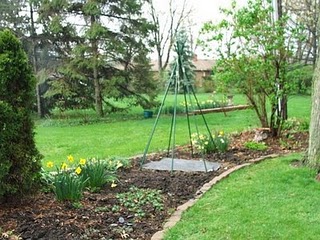


Tags:
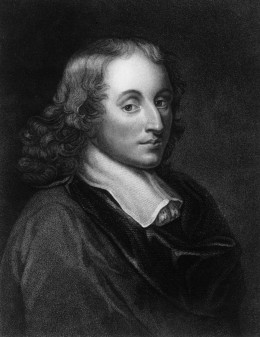
Who was Blaise Pascal? He left a lasting legacy of influence in many fields: theology, philosophy, literature, economics, social science, and mathematics, all in a short life of only 39 years.
Pascal’s mother died when he was only 3 years old, and his father, who was a judge and tax collector, homeschooled Blaise. His genius in mathematics first revealed itself when Pascal at only 13 years old discovered a mathematical error in the work of Rene Descarte.
Three years later, Descarte declared that Pascal “knew more about mathematics than did all the ancients.” At 18, Blaise invented something that made his father’s staff of tax accountants’ workload easier. It was called the Pascaline, the first mechanical calculator. Many were against it however, because it was feared that since the Pascaline could do the work of six accountants, thousands would be unemployed because of it. Here’s a drawing:
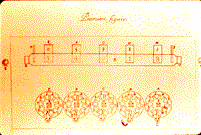
Pascal originated the theory of probability, and in physics he discovered the foundation of modern hydraulics: Pascal’s Law. He also explained how air pressure works, in particular that the higher one goes above sea level the less air pressure there is.
Pascal readily admitted that technology and useful inventions, though beneficial to everyone, may very well convince the shallow-minded that science has a monopoly on truth, which he thought would be a grave error for the human race. Sadly, we see evidence of this same grave error everywhere today. Blaise Pascal said of mankind, “A drop of water can kill him; he is a feeble reed. But he is a thinking reed.”
He thought that humankind was both miserable and great, and that everything could not be explained through scientific formulae. That love, beauty, poetry and even good government are indefinable by science, as are spontaneous conduct, sympathy, friendship, or the love that fills the world.
Pascal famously said, “The heart has its reasons that the reason does not know.” Mathematics with heart, this is the formula for success in any math curriculum! With math lessons as well-rounded as Pascal’s views, your children will not only succeed at math, they will love it for life. And is this not after all the most desirable outcome?
Pascal’s triangle is a wonderful example of his way of thinking. Its magnetic appeal prompts not only practical skill and knowledge, but fascination and interest as well. The triangle is simple in its concept and easy to construct, but contains many wonderful features. Addition skills are all that’s needed to construct it, and the premise is simple: each row builds upon the previous one. Here it is:

Here are some of its features; see if you and your students can discover others:
1) the outside rows are made up of 1’s
2) the second rows are the natural (counting) numbers
3) the third rows are the triangle numbers
Here are the triangle numbers (numbers that actually form triangles):

4) the third rows are also the square numbers, constructed like this:
1 + 3 = 4 (2 x 2)
3 + 6 = 9 (3 x 3)
6 + 10 = 16 (4 x 4)
10 + 15 = 25 (5 x 5)
15 + 21 = 36 (6 x 6)
21 + 28 = 49 (7 x 7)
28 + 36 = 64 (8 x 8)
36 + 45 = 81 (9 x 9)
5) the sum of each row, added across, doubles the one before it:
1 + 1 = 2
1 + 2 + 1 = 4
1 + 3 + 3 + 1 = 8
1 + 4 + 6 + 4 + 1 = 16
1 + 5 + 10 + 10 + 5 + 1 = 32
1 + 6 + 15 + 20 + 15 + 6 + 1 = 64
And last but not least, the hockey stick pattern! This means that a sharp turn to the left or right will result in the sum of all the numbers in the diagonal row before the turn. Here’s an example:

Have fun with Pascal’s triangle by having your students copy it onto a very large piece of paper. You’ll need to have scrap paper on hand to calculate the rows. And finally, have your students color the odd and even numbers with contrasting colors, and you will see triangles within triangles, like this:

Tags:


Good old-fashioned fun, outdoors or in, sadly seems to be a thing of the past since today’s children are too busy with organized sports, specialty lessons, TV or video games, and too much homework to indulge in simple pleasures like hopscotch, street games, or checkers.
Choosing to school at home changes the mindset from organized learning by the bell to a more free form approach, providing more time while also opening a wonderful window for fun and games.
Games played to pass the time and simply have fun are, it turns out, more helpful than we realized. Most games involve strategy and movement (either strength-building large muscle or coordination-focused small muscle movement) both of which immeasurably enhance the learning process.
And the more vigorous the game, the more oxygen to the brain, which promotes healthy neurological growth as well as greater capacity and ability with both learning and memory. Games that require coordinated use of the hands and limbs also promote right-left brain integration which greatly aids thinking and general intelligence.
Here are a couple “brain games” that can be played indoors or out!

FIVESTONES
This game is more than 2,000 years old, is the predecessor of today’s JACKS, and is best played by kids 8 and older because it requires a lot of eye-hand coordination. Each player starts with five small stones in hand, throws and catches them, and picks them up off the ground in five separate throws, with each player picking up where s/he left off for every turn. It may be played solo or competitively with others. Here are the throws:
5’s
The stones are tossed up in the air from a cupped palm, the hand is turned over, palm down, and all five stones are caught on the back of the hand. The stones are tossed up again and caught in the palm. If all five stones fall to the ground, the turn is over. If four or fewer fall, the player goes on to the next throw.
1’s
Four stones are scattered on the ground, and the one left in the player’s hand is thrown into the air. One stone at a time is scooped up before the tossed stone is caught with the same hand. This is repeated until all four stones are picked up.
2’s
Four stones are scattered on the ground, and this time the player picks up two stones at a time while the one stone is airborne, till s/he has picked up all four.
3’s
For this turn, one stone is picked up the first time, then three are picked up.
4’s
This is the fifth and final throw, and all four stones must be picked up. The first player to complete all five throws is the winner.
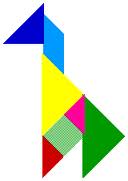
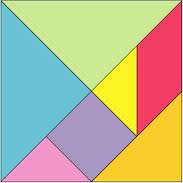
TANGRAM TRADES
Tangram is loosely based on an old Chinese puzzle game. In this version, players create their own jigsaw puzzles then trade them and race to put the pieces back together. You will need a pair of scissors and a piece of cardboard that’s the same size for every player (shirt cardboard or cut up poster board will do). Three or more players from 7-11 years old are recommended.
Players make several straight-line cuts (decide how many and whether they are cut on angles for more or less complexity). Pieces are then scrambled and at the signal from a supervising adult or older child, slid over to the player to the right.
Players must reconstruct the pieces into their original rectangular shapes. When a player succeeds, s/he calls out and play stops while it’s determined by the supervisor if the puzzle has been solved. If so, that player scores 10 points.
The puzzles are passed on again until every player has had a turn with all the puzzles, and the player who scores the highest at the end is the winner.

So have fun playing games! For the fun of it, and for better all-around learning.

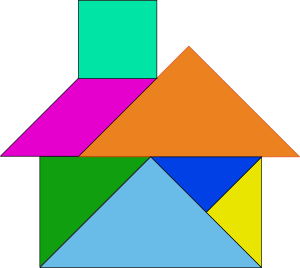
Tags:

Clouds weren’t named until 1803 when Luke Howard, an English pharmacist who was also an amateur sky watcher and weather buff, took it upon himself to give them their descriptive, Latin names. He named stratus clouds for the Latin: layer, cumulus for the Latin: heap, cirrus for the Latin: curly, and nimbus for the Latin: rain. So, for example, a cumulonimbus cloud is the name for a thundercloud, full of rain.
Did Einstein have his head in the clouds, and should your homeschool math curriculum be there as well? Yes! Consider that a low stratus cloud measuring about 0.6 miles on each side weighs about 200,000 pounds, or that a strong cumulonimbus (thunderstorm) cloud weighs about 2,000,000 pounds. Quite an engineering feat isn’t it? These gargantuan, heavenly structures manage to not only stay aloft, but to do so beautifully, gracefully, and effortlessly.
This is how Einstein came upon most of his momentous discoveries and theories. His scientific career was based largely on happenstance and pure inspiration. As a patent clerk, he surreptitiously scribbled thoughts and theories, while keeping them hidden away in a desk drawer. E=MC2 had such humble but inspired beginnings! This “cloud” is made up of words from his book, Relativity: the Special and General Theory.
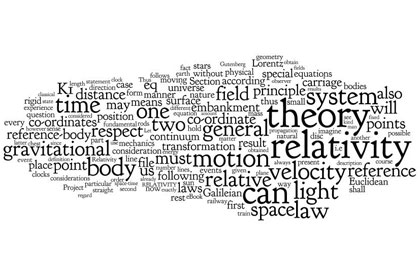
Imagination was the touchstone of Einstein’s work. He resisted the plodding, unimaginative approach offered in the schools and universities he attended. And since Einstein was a mathematician above all else, we can extrapolate that math itself should be based on the same intuitive, elegant, graceful qualities that made up both his body of work and the essence of clouds as engineering marvels. Nothing sparks your child’s enthusiasm, innate ability, and success in math like imagination!
A hands-on experiential approach rather than a worksheet, chore-based format can supply the missing ingredient, while fostering a true joy of learning. It is also essential to success in math or any other subject to place the learning experience in a much broader, universal context. The piecemeal nature of most of the subject matter taught in schools is disjointed and alienating, whereas teaching through the whole or universal perspective empowers and engages the hidden genius in all of us.
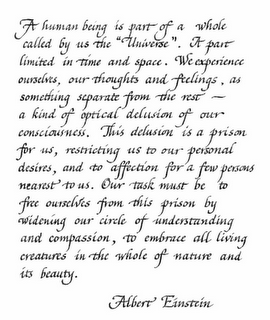
Once again, wise words! And ones we should take seriously when considering the way we teach our children. Open-mindedness and respect for all life should be the central tenet in any curriculum, as should respect for each subject taught. This respect should extend to the student as well, and be communicated above all else in our teaching.
So, do base your homeschool math curriculum in the clouds! You, your student(s), and it will be in excellent company there.

Tags:
Time and measurement are essential aspects of your homeschool math curriculum, but it may be better to wait until your child is ready to receive these abstract concepts. The garden of childhood is timeless, and so it should be. There’s time enough to be preoccupied with time, no need to rush it.
In Waldorf education, time and measurement wait until the third grade. Though children may appear to have an awareness of time-telling and the days of the week and months of the year before then, it doesn’t take hold in a real way till age 8 or 9. Children then cross a threshold of sorts, out of the garden of childhood to take their first steps into the world. As such, this age is a perfect time to help them orient in time!
An excellent way to teach the concepts of time and measurement is through story and history. There are many surprising and anecdotal tales to tell about the way we measure time. When telling the story of how the months came to be named, you could start by sharing that the word month was derived from the word moon! It’s easy to see that the length of the month follows the cycle of the moon.

It’s a challenge to tell these stories in a non-literal way, but this is the format that will be best understood and assimilated by your children. So gear your homeschool math curriculum to the poetic rather than the strictly scientific, and it will be much better received. Keep that in mind as you tell the story of the months, using the following information as raw material, embellishing it with stories and images, and so bringing it to life.
The original Roman year had 10 months, with the 2 months in the dead of winter not counted at all. The year officially began in March when life was beginning to stir again, and by that count, September was the seventh, October the eighth, November the ninth, and December the tenth month. The 2 extra months were added to the calendar in 700 BC.
Here are the Roman origins of the names of the months . . .
JANUARY was named for Janus, the Roman god of gates and doorways. His faces looked to the past and the future, symbolizing the old and new year.

FEBRUARY was named for Februa, the Roman festival of purification, held on February 15.

MARCH was named for Mars, the Roman god of war, since wars were resumed as the year began anew.

APRIL was named for Aprilis, the Latin name for the Greek goddess Aphrodite, who is symbolized by the rose.

MAY was named for Maia, the Roman goddess of spring.
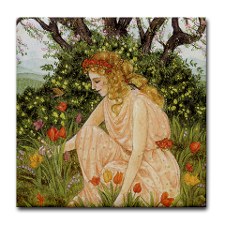
JUNE was named for Juno, the Roman goddess of marriage and the home. June is the month for weddings, after all!
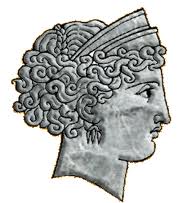
JULY was named for Julius Caesar. He reformed the calendar in 46 BC, so it became the Julian calendar as we know it today, and he named the month of July after himself.

AUGUST was named for Augustus Caesar. He completed the calendar reform and named this month after himself.

SEPTEMBER is taken from the Latin “septem” meaning seven.

OCTOBER is taken from the Latin “octo” meaning eight.

NOVEMBER is taken from the Latin “novem” meaning nine.

DECEMBER is taken from the Latin “decem” meaning ten.

Have fun telling the story of how the months came to be, and grew from 10 to 12, and remember that your homeschool math curriculum will come alive when you include the origins and meaning of each of the math time and measurement facts you teach!
Tags:
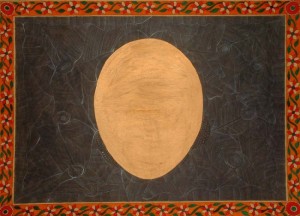
Zero is such a familiar concept that it seems like it’s been with us forever. Not so! Letters were used as numbers in many ancient cultures, most notably, in ancient Rome. The premise was relatively simple; only 7 letters were used for all the known numbers in the Roman system. And the Roman numerals far outlasted their inventors. They were commonly used in Europe, along with the abacus, well into the 13th century.
The concept of zero made its appearance in several other times and places before it appeared in its most recognized birthplace, India. It took many centuries for the notion of “nothing” or “the void” to take hold in the West. Eastern cultures seem to be much more comfortable with it. For example in Hindu philosophy, the teachings of the Buddha introduced the concept of the void. Many Eastern creation stories feature the “cosmic egg” which contains next to nothing and everything at the same time.

So, it’s easy to see why, because of basic philosophical differences, zero may have met with some resistance in the West. But for purely practical reasons, when ever-increasing commerce and trade demanded a new system of counting, it was accepted and adapted. The first name given to zero in India was “sunya” meaning the void. In Arabic, zero was known as “sifr” which means empty.
The Italian mathematician Fibonacci who grew up in North Africa and is credited with introducing the Arabic numbers and decimal system to Europe, used the term “zephyrum” meaning west wind. This became “zefiro” in Italian, shortened to “zero” in Venetian. In India, a heavy black dot was used to represent zero in written calculation. When a medieval scribe questioned how to write zero, he was advised to draw a hole to represent the concept of nothing. Hence our modern zero! Here’s a lovely version woven by Eva the Weaver:
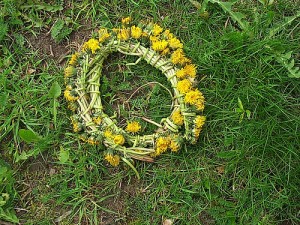
Many offshoots followed. Words derived from “sifr” and “zephyrus” referred to number and calculation itself. For example, the French “chiffre” meant digit, figure, or number. The word “arithmetic” came from the Greek word for number, “arithmos” and the word “algorithmic” is a derivative of the name Al Khwarizmi, a Persian encyclopedist who is perhaps the most significant contributor to modern mathematics.
Zero has taken on many other names since it’s adoption by the West: null, naught, aught, void, cipher, nix, zilch, zip, zippo. And bringing it all back to the beginning, the cosmic egg, “goose egg” is another term for zero. So, next time you’re balancing your checkbook or making a grocery list with a column of numbers, remember zero’s beginnings and the fact that it hasn’t been with us here in the West for very long. Finally, from Albert Einstein, a little something about delving into the void, “I believe ninety-nine times and I find nothing, I leave thinking, diving into deep silence – and behold, the truth is revealed to me.”

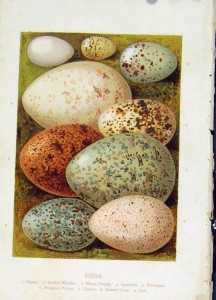

Tags:
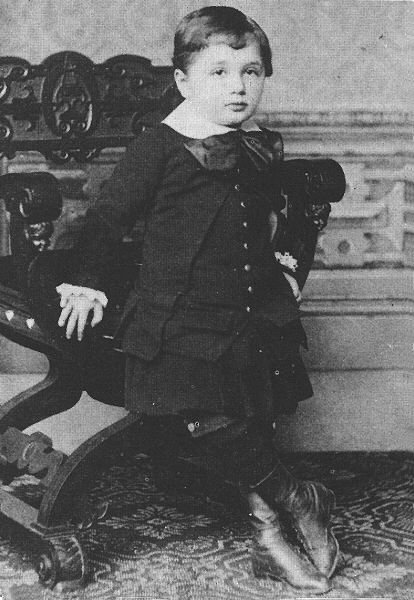
Albert Einstein, arguably the greatest mathematician/scientist of our or any time, was by no means an honor student. School was not to his liking, and he did not excel in his classes. But he was able in spite of (or perhaps because of) that “shortcoming” to successfully nurture an inner genius that was prolific, productive, and formidable. A homeschool environment is perhaps then the most likely option for children whose particular genius does not fare well in the classroom.
Here’s what Einstein had to say about exams, “One had to cram all this stuff into one’s mind for the examinations, whether one liked it or not. This coercion had such a deterring effect on me that, after I had passed the final examination, I found the consideration of any scientific problems distasteful to me for an entire year.” It’s possible to extrapolate this to a child who may be under the considerable stress of math fears or phobias. An obvious solution could be a homeschool math curriculum that’s an antidote to such a debilitating, stressful environment.
Here’s a few more of Einstein’s thoughts on education and formal schooling, “The only thing that interfered with my learning is my education.” And, “Education is what remains after one has forgotten everything he learned in school.” Perhaps a differentiation between schooling and education is relevant here. The root of the word education is educere from the Latin, “to lead out.” Whereas schooling implies sameness and a sort of herding together, as in “a school of fish,” education can be seen as discovering the genius within and “leading it out” into the world.
Your homeschool math curriculum can reflect this. Mathematics should be a joy, not a chore. This is its true nature! And the math phobias and fears that are all too prevalent today can be much alleviated by two things: a curious, interested, adventuresome approach, and a tolerance for mistakes. Both of these qualities should be present in teacher and student alike. Einstein said, “Anyone who has never made a mistake has never tried anything new.” And, “I have no special talents, I am only passionately curious. The important thing is not to stop questioning. Curiosity has its own reason for existing.”
Fear of making mistakes is perhaps the greatest cause of math anxiety. One way to create a climate that’s more friendly and tolerant of so-called mistakes is to encourage exploration in all of your homeschool math curriculum lessons. Honing the skill of estimation is a good example of guessing at the answer, along with a recognition that there can be more than one right answer. Teaching a new concept with an exploratory rather than a definitive, finished attitude is another way to create a friendlier learning environment.
Here’s an example. When first teaching the concept of fractions, use something concrete as a model, like a piece of fruit. Ask a lot of questions as you explore the possibilities. As you cut the fruit up, ask what is happening at each step, so the students arrive at an understanding of the whole and its parts on their own. They are constructing the lesson along with you the teacher, so the innate knowledge within them is growing naturally rather than the finished concept being foisted upon them without their making a contribution to the learning process.
As Einstein said, “Most teachers waste their time by asking questions which are intended to discover what a pupil does not know, whereas the true art of questioning has for its purpose to discover what the pupil knows or is capable of knowing.” You can lessen math anxiety by conveying that even great geniuses had their moments of struggling with math. As Einstein said, ”Do not worry about your difficulties in mathematics. I can assure you mine are still greater.”
Yes, math should be a joy, not a chore. When its innate fun and beauty is included in all of your homeschool math lessons, this becomes possible. A willingness of the student to exert an effort, to gladly explore and learn all there is to know of the world and its wonder, is at the root of true education. To this, Einstein said, “Never regard your study as a duty, but as the enviable opportunity to learn to know the liberating influence of beauty in the realm of the spirit for your own personal joy and to the profit of the community to which your later work belongs.” That says it all! And could be the essence and worthy goal of any homeschool curriculum.
Einstein was as much a philosopher as a mathematician/scientist. The sign hanging on his office wall at Princeton said,
”Not everything that counts can be counted, and not everything that can be counted counts.” Make your homeschool math curriculum count with lessons that honor the imagination and the creative genius that lives within each of your students.
Tags:
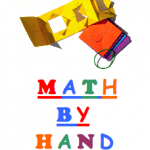 One of the most valuable concepts I learned as a Waldorf teacher was that “breathing out” is as (or more) essential to successful teaching and learning as “breathing in” is. Recreational time or time out from learning is absolutely crucial to every student’s health, well-being, and true educational success. The good news is that your homeschool math curriculum can breathe!
One of the most valuable concepts I learned as a Waldorf teacher was that “breathing out” is as (or more) essential to successful teaching and learning as “breathing in” is. Recreational time or time out from learning is absolutely crucial to every student’s health, well-being, and true educational success. The good news is that your homeschool math curriculum can breathe!
Adopting a program like Math By Hand ensures that your students will not only have good, healthy fun in between their math lessons but during them as well. Taking time out from a math lesson or pencil-and-paper practice by having students do jumping jacks is one thing. But what if your homeschool math curriculum was so lively, fun, and invigorating that there was no need to take this sort of time out from it? Now that’s a truly successful math program!
We have only to witness the effects of cutbacks in our schools’ arts and PE programs to note how mistaken the notion of “more academics is better” can be. And nowhere is this notion more apparent than in China’s school system. Yong Zhao, the Associate Dean of the University of Oregon, writes in his 12/10/10 blog that the staggering hours of schoolwork and homework that are expected of top Chinese students (especially middle school and high school students) may be backfiring. See the full blog entry at: http://yong-zhao.com/2010/12/10/a-true-wake-up-call-for-arne-duncan-the-real-reason-behind-chinese-students-top-pisa-performance/)
He notes that “Chinese students (a sample from Shanghai) outscored 64 countries/education systems on the most recent PISA, OECD’s international academic assessment for 15 year olds in math, reading, and science.” He wonders why international education experts were so impressed by this statistic since, “It is no news that the Chinese education system is excellent in preparing outstanding test takers, just like other education systems within the Confucian cultural circle—Singapore, Korea, Japan, and Hong Kong.”
Zhao goes on to say that this news did not make a big splash in any of China’s major media outlets. He searched extensively but did not find any mention of this outstanding achievement. What he did find instead was a story from a Chinese middle schooler’s mother that is both shocking and sad, and may provide the real reason behind the outstanding performance of top students in China. It “follows a mother’s online posting, complaining about how her child’s school’s excessive academic load has caused serious physical and psychological damage.”
The article details the grueling work load and unreasonable expectations that are piled on the vulnerable shoulders of these youngsters. The online post says that her daughter’s 7th grade middle school schedule included extra evening classes that ended at 6:30pm. But that since entering 9th grade, her evening classes have been extended to 8:40pm every day, and that 12th graders are also required to take additional classes from 7:30am to 8:00pm on Saturdays.
There are 5 weeks of classes during winter and summer school vacations, and the long school days do not include any self-study time or physical education classes. The mother adds, “After coming home after 10pm, she has to spend at least one hour on her homework. She has to get up at 5am. She is still a child. May I ask how many adults could endure this kind of work? This kind of practice has seriously damaged students’ health. They have completely lost motivation and interest in studying. My child’s health gets worse day by day. So does her mental spirit.”
There’s perhaps a fine line between a “fun” math program and the much-maligned “fuzzy math.” But Math By Hand’s homeschool math curriculum is nicely balanced precisely on that fine line because in it, depth and academic integrity are not sacrificed in order to make math likeable and friendly. Its hands-on, experiential format is based on the concept that math’s true, deepest nature is creative and imaginative, because what can be found at its root is the sort of truth and beauty that compels even the most reluctant student to interested and respectful study.
There’s a certain amount of faith and trust that must be inherent in every teacher’s approach. It is this quality that allows any curriculum to “breathe.” Just as breathing organisms thrive on both the intake of oxygen and the expulsion of carbon dioxide, so do our students thrive on the intake of knowledge or wisdom along with the accompanying creative or physical expression that should be encouraged as a natural outcome.
As Dorothy Sayers said, “Is it not the great defect of our education today that although we often succeed in teaching our pupils “subjects,” we fail lamentably on the whole in teaching them how to think? They learn everything, except the art of learning.” So, because learning is both a science and an art, it is incumbent upon teachers to treat it as such, and to remember that every great work of art is built much more on freedom than coercion. Infuse your homeschool math curriculum with inspiration, creativity, and yes, FUN! And always balance learning with play.
Marin holds a Masters Degree in Waldorf Education, and a California teaching credential in art. She’s had years of experience as a Waldorf class teacher in the early grades, has taught hands-on science and math to homeschoolers in grades 1-6.
Learn More about This New Homeschooling Math Product Click Here> Homeschool Math Curriculum
Tags:

